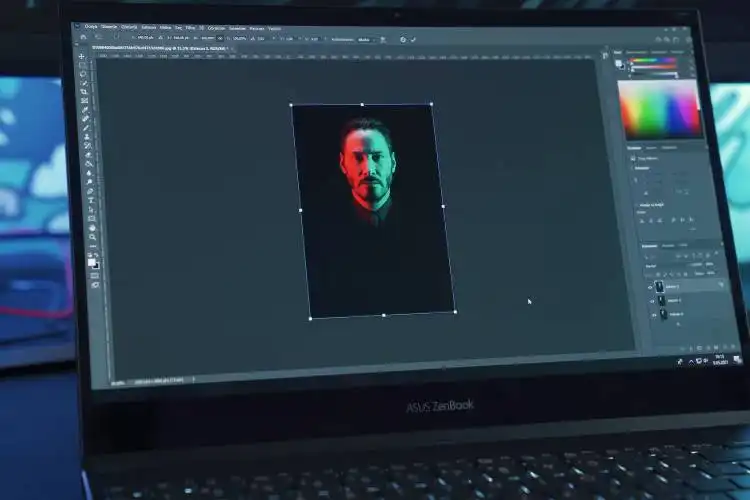Start a Glass Blowing Business
Creating Magic with Glass: An Artistic Symphony of Light, Color, Fire, and Sand
| Updated


GLASS BLOWING BUSINESS
Delving into the vibrant world of a Glass Blowing Business is like bringing art and fire together. This fascinating business type involves creating mesmerizing objects, from simple decorative beads to intricate glass sculptures, by manipulating molten glass. Imagine being a magician, using heat and breath to shape trinkets or massive installations which might find their place in the homes or hearts of art lovers. This entrepreneurial venture does require skills that are mastered over time, but in no time, you'll be creating a symphony of light and color, fire and sand.
Jump to Business Plan
RELATED BUSINESS IDEAS
Browse ALL Arts & Crafts Business Ideas
Discover Your Perfect Domain
Unlock the door to your online success with our hand-picked selection of premium domain names. Whether you're starting a new venture or rebranding an existing one, the right domain can set the tone for your digital presence. Browse through our curated list, each with its unique potential to enhance your brand's visibility and credibility.
GLASS BLOWING MINI BUSINESS PLAN
This a quick reality check to help you identify the strengths and weaknesses of your business concept before you dive in.
Business Analysis: Glass Blowing Business
Expected Percent Margin:
- Gross Margin: 40-50%
- Net Profit Margin: 10-20%
Earnings Expectations:
- Daily Earnings: $100 - $400
- Weekly Earnings: $700 - $2,800
- Monthly Earnings: $3,000 - $12,000
- Annual Earnings: $36,000 - $144,000
Actions To Hit Those Numbers:
Supplies and Maintenance:
- Initial Investment: It's reasonable to invest at least $10,000 - $20,000 on equipment, raw materials, and studio setup.
- Equipment Maintenance : Regular monthly maintenance budget should range around $300 - $500 monthly.
Product Pricing and Design:
- Pricing Strategy: Sell each piece for at least 3 times the cost of materials to cover overheads and still turn a profit.
- Creativity: Keep your designs innovative and unique to maintain a customer's interest.
Marketing and Sales:
- Online Sales: Etsy, eBay, and your website can be good platforms. Update your catalogue regularly.
- Physical Store/Workshop: Open a physical storefront, if possible. This helps increase customer trust.
- Local Fairs and Expos: Participate in local craft fairs and expos for wider reach.
Creativity and Training:
- Learning and Expansion: Keep learning new techniques and involve in collaborating with other artists to expand your skills and product range. This can help increase the average retail price of your pieces.
- Workshops and Courses: Conducting workshops or offering courses can also be a good income stream.
Cost Control:
- Raw Materials: Bulk purchase of raw materials can bring down the cost.
- Energy Consumption: Keep control of utility bills. Using energy-efficient furnaces can reduce monthly utility bills.
Always remember these figures are rough estimates and highly depend on various factors such as location, investment, and business strategy.
NOT WHAT YOU HAD IN MIND? Here are more ideas



Browse ALL Arts & Crafts Business Ideas
Grab Your Business Website Name
Before you get caught up in the whirlwind of setting up your business, invest in a domain name. It's a small but significant step that lays the foundation for your brand and makes it easier for customers to find and trust you. Just like you wouldn't build a house without securing the land first, don't build a business without securing your domain name.
"Why? Can't that wait?" Here's why it shouldn't
Step 1: Determine if Glass Blowing Business is Right Endeavor
Breakdown of Startup Expenses
Before starting a glass blowing business, it's important to understand the costs associated with setting up the business. This includes the cost of equipment, such as a furnace, tools, and supplies. Additionally, there may be costs associated with renting a workspace or purchasing a building to house the business. It's also important to consider the cost of insurance, licensing, and permits. Finally, you may need to factor in the cost of marketing and advertising to get the word out about your business.
Breakdown of Ongoing Expenses
Once the business is up and running, there are ongoing expenses to consider. This includes the cost of supplies, such as glass, tools, and fuel. Additionally, there may be costs associated with maintaining the workspace and equipment. It's also important to factor in the cost of utilities, such as electricity, water, and gas. Finally, you may need to consider the cost of insurance and taxes.
Examples on Ways to Make Money
There are a variety of ways to make money with a glass blowing business. One option is to create custom pieces for clients. This could include sculptures, vases, and other decorative items. Additionally, you could create functional pieces, such as drinking glasses, plates, and bowls. You could also offer classes or workshops to teach people how to blow glass. Finally, you could create and sell your own line of products, such as jewelry, ornaments, and other decorative items.
Step 2: Name the Business
When naming a business, it is important to consider the type of business, the target audience, and the overall mission of the business. It is also important to consider the potential for growth and the ability to stand out from the competition. Additionally, it is important to consider the potential for trademarking the name and the ability to create a recognizable brand.
When naming a glass blowing business, it is important to consider the type of glass blowing that will be done. For example, if the business specializes in creating glass sculptures, the name should reflect that. Additionally, the name should be memorable and easy to pronounce. It should also be unique and not too similar to any other existing glass blowing businesses.
When creating a logo for the business, it is important to consider the type of glass blowing that will be done. For example, if the business specializes in creating glass sculptures, the logo should reflect that. Additionally, the logo should be simple and easy to recognize. It should also be unique and not too similar to any other existing glass blowing businesses.
Finally, it is important to consider the potential for trademarking the name and logo. This will help to protect the business from any potential competitors that may try to use the same name or logo. Additionally, it will help to create a recognizable brand that will be associated with the business.
Step 3: Obtain Necessary Licenses and Permits
Before starting a glass blowing business, it is important to research and understand the local regulations and obtain the necessary licenses and permits. This is a crucial step that must not be overlooked.
Research Local Regulations
The first step in obtaining the necessary licenses and permits is to research the local regulations. Depending on the location, there may be different regulations and laws that must be followed. It is important to research the regulations and laws that apply to the specific area in order to ensure that the business is in compliance. Additionally, it is important to research any zoning laws that may apply to the area.
Obtain Business License
The next step is to obtain a business license. This is necessary in order to legally operate the business. Depending on the location, the process for obtaining a business license may vary. It is important to contact the local government office to find out the specific requirements and steps to obtain a business license. Additionally, it may be necessary to obtain additional licenses or permits depending on the type of business being operated.
Step 4: Find a Suitable Location
Considerations for Location
When looking for a suitable location for a glass blowing business, it is important to consider the size of the space needed, the cost of the space, and the zoning regulations of the area. The size of the space will depend on the type of glass blowing business being opened. For example, if the business is a retail shop, more space will be needed to accommodate customers. The cost of the space should also be taken into account. It is important to find a space that is affordable and within the budget of the business. The zoning regulations of the area should also be taken into account. It is important to make sure that the business is in compliance with all local regulations.
Leasing vs. Buying
When looking for a suitable location for a glass blowing business, it is important to consider whether to lease or buy the space. Leasing is often the more cost-effective option, as it allows the business to pay a monthly fee for the space. However, it is important to consider the length of the lease and the terms of the lease. Buying a space is often more expensive, but it can provide more stability for the business in the long run. It is important to consider the pros and cons of both options before making a decision.
Step 5: Acquire Equipment
List of Necessary Equipment
When starting a glass blowing business, there are certain pieces of equipment that are necessary for success. This includes a furnace, a glory hole, a bench, tools, and an annealer. The furnace is used to heat the glass, the glory hole is used to keep the glass hot, the bench is used to work on the glass, and the tools are used to shape the glass. The annealer is used to cool the glass.
Sources for Equipment
When it comes to acquiring the necessary equipment, there are a few different options. The most common option is to purchase the equipment from a glass blowing supplier. This is usually the most expensive option, but it is also the most reliable. Another option is to purchase used equipment from a glass blower who is no longer in business. This is usually the least expensive option, but it can be difficult to find the right equipment. Finally, some glass blowers choose to build their own equipment. This is a great option for those who are experienced in metalworking and welding.
Step 6: Hire Employees
Considerations for Hiring Employees
When hiring employees, it is important to consider the skills and experience they bring to the table. It is also important to consider the cost of hiring and training employees. Depending on the size of the business, it may be necessary to hire a full-time staff or just a few part-time employees. It is also important to consider the cost of benefits, such as health insurance and vacation time. Additionally, it is important to consider the legal implications of hiring employees, such as the need to comply with labor laws and regulations.
Training Employees
Once the employees have been hired, it is important to provide them with the necessary training to ensure they are able to do their job properly. This includes providing them with the necessary safety training, as well as providing them with the skills and knowledge needed to create the glass products. It is also important to provide them with the necessary tools and materials to create the glass products. Additionally, it is important to provide them with the necessary customer service training to ensure they are able to provide the best possible customer service. Finally, it is important to provide them with the necessary marketing and sales training to ensure they are able to effectively promote and sell the glass products.
Step 7: Market the Business
Developing a marketing plan is an essential step to launching a successful glass blowing business. A marketing plan should include a detailed analysis of the target market, the competition, and the product or service being offered. It should also include a budget, a timeline, and a list of marketing strategies to be used.
When developing a marketing plan, it is important to consider the target market and the competition. Researching the target market will help to identify the needs and wants of potential customers, and understanding the competition will help to identify what sets the business apart from others.
Examples of marketing strategies include advertising, public relations, social media, and word of mouth. Advertising can be done through print, radio, television, and online platforms. Public relations can be used to build relationships with media outlets and influencers. Social media can be used to reach a broad audience and build relationships with potential customers. Word of mouth can be used to spread the word about the business and its offerings.
It is also important to consider the budget when developing a marketing plan. A budget should include the cost of advertising, public relations, social media, and any other marketing strategies being used. It is important to allocate enough money to cover the cost of marketing, as this will help to ensure the success of the business.
Finally, it is important to create a timeline for the marketing plan. This will help to ensure that the marketing strategies are implemented in a timely manner. It is also important to track the results of the marketing plan and adjust it accordingly. This will help to ensure that the business is reaching its target market and achieving its desired results.
Step 8: Manage Finances
Setting Up Accounting System
Setting up an accounting system is essential for any business, and glass blowing businesses are no exception. An accounting system will help you keep track of your income and expenses, and will help you make sure you’re staying on top of your taxes. You’ll need to decide what type of accounting system is best for your business, whether it’s a spreadsheet, a software program, or a combination of both. You’ll also need to decide who will be responsible for managing the accounting system, whether it’s you or an accountant.
Establishing a Budget
Establishing a budget is also essential for any business. A budget will help you determine how much money you need to bring in to cover your expenses and how much money you need to save for taxes. It will also help you determine how much you can afford to spend on supplies, marketing, and other expenses. You’ll need to decide how much money you can realistically set aside for each expense, and then stick to that budget. You’ll also need to decide how often you’ll review your budget and make adjustments as needed.
Step 9: Establish Policies and Procedures
Developing Employee Handbook
Before hiring any employees, it is important to develop an employee handbook that outlines the policies and procedures of the business. This should include the expectations of employees, such as the hours they are expected to work, the dress code, and the benefits they are eligible for. It should also include the disciplinary procedures and the process for filing a complaint. Additionally, it should include the company’s mission statement and any other relevant information. This handbook should be given to each employee upon hire and should be updated as needed.
Establishing Safety Protocols
Glass blowing is a dangerous activity, so it is important to establish safety protocols to ensure the safety of employees and customers. These protocols should include the proper use of safety equipment, such as gloves, goggles, and face shields. Additionally, protocols should be established for the proper storage and handling of glass, as well as the proper disposal of any waste materials. Finally, protocols should be established for the proper use of any tools or equipment used in the glass blowing process. These protocols should be reviewed regularly and updated as needed.
EXPLORE MORE CATEGORIES
Browse ALL Business Idea Categories
TAKE THE NEXT STEPS









